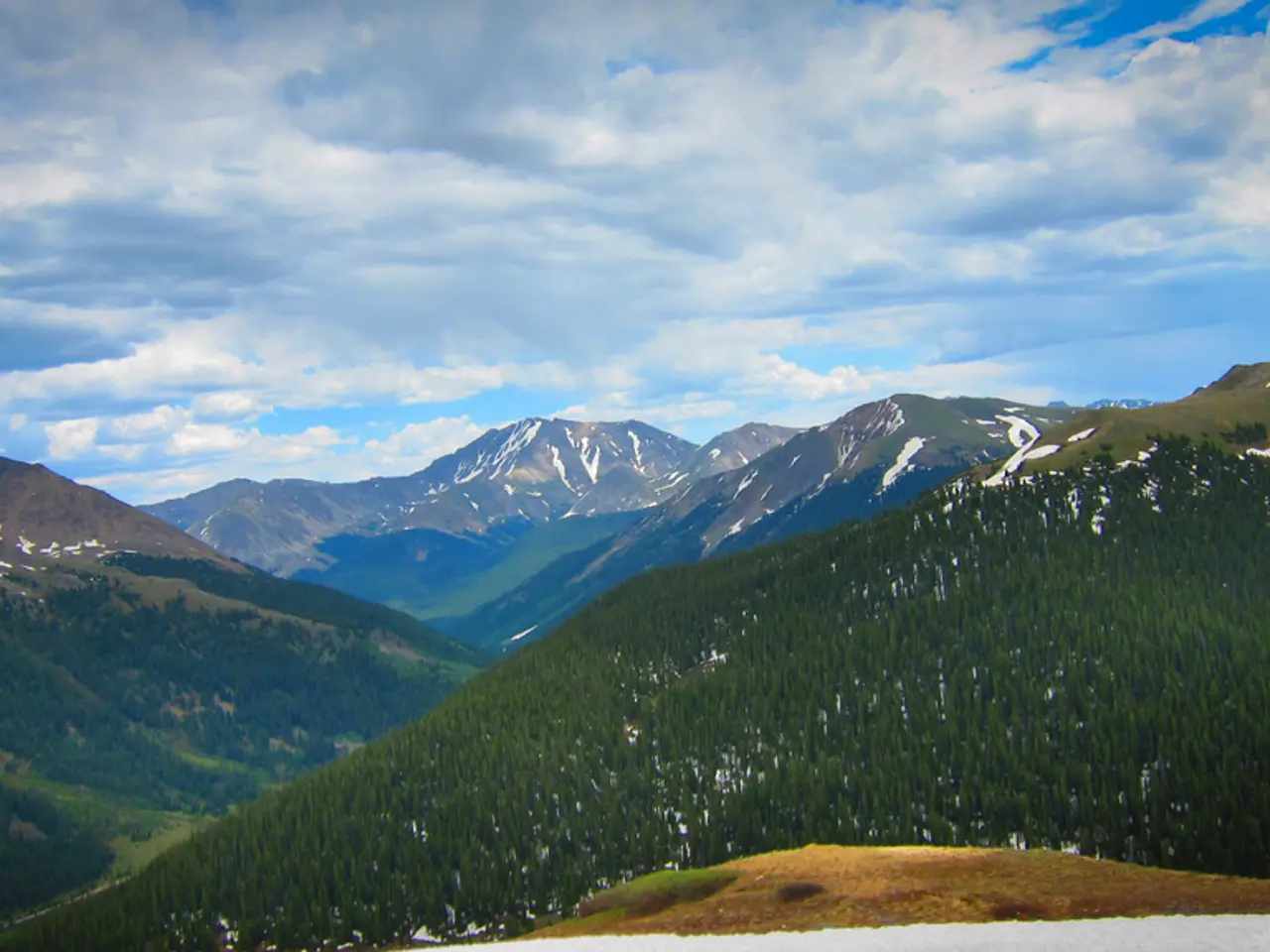Nepal abolishes peak climbing fees for particular mountains in an attempt to attract trekkers.
Nepal has announced a significant move to promote tourism and economic growth in the least developed areas of the country, by waiving climbing fees for 97 Himalayan peaks in the remote northwestern regions of Karnali and Sudurpaschim for the next two years [1][2][4]. This strategic decision aims to attract more climbers to these scenic but difficult-to-access mountains, create jobs, and strengthen the local economy in some of Nepal’s poorest regions [1][2].
The waived peaks range from 5,870 to 7,132 meters in height and include many virgin summits, offering unique challenges for climbers seeking new experiences [2]. The initiative is also intended to shift mountaineering traffic away from heavily trafficked routes like Everest, where permit fees have recently increased, potentially reducing overcrowding there [1][3].
Mountain climbing and trekking are the main attractions for tourists in Nepal, contributing significantly to the country's economy. However, climbers typically focus on around 25 peaks in the northeast and central parts of Nepal, with Everest being the most popular [1]. To encourage exploration of unexplored yet scenic areas and mountain peaks, the Nepalese government has decided to waive climbing fees for these 97 peaks [4].
The decision to waive fees for these remote peaks does not apply to climbs on Mount Everest, which has seen a rise in its permit fee to $15,000 from a previous $11,000 [1]. Similarly, the permit fee for climbing smaller mountains has increased to $350 from a previous $250 [1]. Despite these increases, mountain climbing and trekking remain important sources of income and employment in Nepal [1].
Officials hope this fee waiver will lead to increased visitor numbers to remote far-western Nepal [1][2]. It is expected to provide greater economic opportunities and job creation for local communities through tourism-driven services such as guiding, lodging, and logistics [1][2]. Moreover, it aims to unlock the tourism potential of pristine regions that were previously overlooked due to poor accessibility and minimal infrastructure [2].
So far, only 68 climbers have attempted these 97 peaks in the past two years, generating minimal revenue. The free permit scheme is expected to significantly increase climber interest and spending in these areas, helping local economies to develop and reducing pressure on established peaks like Everest [1][5].
In conclusion, Nepal’s waiver of climbing fees for these remote peaks is a deliberate effort to promote sustainable tourism growth in lesser-known mountainous regions, supporting local economic development while expanding adventure tourism options beyond the traditional hotspots [1][2][4]. This move is expected to bring about positive changes in the tourism sector, benefiting both the local communities and the visitors seeking new and exciting experiences in the Himalayas.
References: [1] The Himalayan Times. (2022). Nepal waives climbing fees for 97 Himalayan peaks in remote northwestern regions. Retrieved from https://thehimalayantimes.com/nepal/nepal-waives-climbing-fees-for-97-himalayan-peaks-in-remote-northwestern-regions/
[2] The Kathmandu Post. (2022). Nepal waives climbing fees for 97 Himalayan peaks in remote northwestern regions. Retrieved from https://kathmandupost.com/national/2022/08/11/nepal-waives-climbing-fees-for-97-himalayan-peaks-in-remote-northwestern-regions
[3] The Guardian. (2022). Nepal hikes Everest climbing fees to $15,000 as part of government's bid to reduce overcrowding. Retrieved from https://www.theguardian.com/world/2022/apr/13/nepal-hikes-everest-climbing-fees-to-15000-as-part-of-governments-bid-to-reduce-overcrowding
[4] BBC News. (2022). Nepal waives climbing fees for 97 Himalayan peaks to boost tourism. Retrieved from https://www.bbc.com/news/world-asia-62532146
[5] Al Jazeera. (2022). Nepal waives climbing fees for 97 Himalayan peaks to boost tourism. Retrieved from https://www.aljazeera.com/news/2022/8/11/nepal-waives-climbing-fees-for-97-himalayan-peaks-to-boost-tourism
Sports enthusiasts might consider exploring the lesser-known landscapes of hockey in Nepal as the government has decided to waive climbing fees for 97 Himalayan peaks, including many virgin summits. This move aims to attract more adventure seekers to these remote regions, fostering economic growth and job creation.







